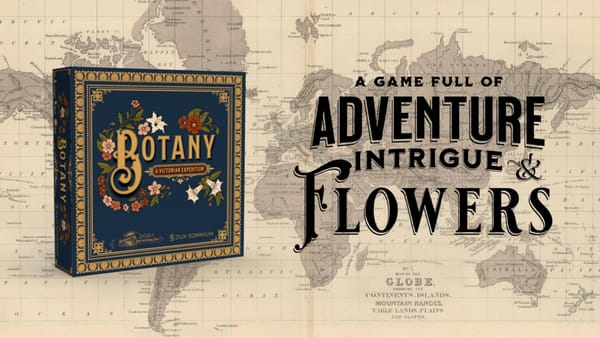How to Set Realistic Stretch Goals for Your TTRPG Crowdfunding Campaign

Stretch goals are one of the most exciting aspects of a crowdfunding campaign. They can elevate your tabletop RPG (TTRPG) project, offer additional content or features, and create a sense of achievement for both you and your backers. However, setting stretch goals requires careful consideration. While it’s tempting to promise all sorts of amazing rewards as you exceed your initial funding goal, unrealistic stretch goals can quickly backfire, leading to delays, budget overruns, and disgruntled backers.
In this post, we’ll discuss how to set stretch goals that are both exciting for your backers and achievable for you, ensuring a smooth campaign and successful delivery.
1. Start with Your Core Product
Before you begin planning stretch goals, it’s essential to have a clear understanding of your core product and what your base funding goal will cover. Your stretch goals should never interfere with the main product that you promised your backers. Ensure that you can deliver the core game or content on time and within budget before you start thinking about stretch goals.
Once your main product is secured, you can then set stretch goals that will enhance it without overcomplicating the process. For example, if your goal is to fund a tabletop RPG rulebook, stretch goals could involve additional art, expanded story content, or even miniatures to enhance the game experience.
2. Align Stretch Goals with Your Backers’ Interests
Your backers are the people who will help fund your project, so it’s essential to align stretch goals with what they truly want. One way to figure this out is by engaging your audience before and during your campaign.
- Pre-Campaign Polls: Before launching your campaign, you can run a survey or poll on your social media channels or Kickstarter to get a sense of what backers are excited about. Do they want new character classes, new settings, or more detailed maps? Tailor your stretch goals to these preferences to create rewards that your backers will love.
- Backer Feedback During the Campaign: Once your campaign is live, engage with backers in the comments or on social media. Ask for feedback on what kinds of additional content they would like to see unlocked. Your backers are your most valuable source of insight, and listening to them can help you create stretch goals that are both achievable and appealing.
3. Break Down Stretch Goals into Manageable Milestones
One of the most important things to keep in mind when creating stretch goals is that they should be broken down into achievable milestones. This helps prevent backers from feeling overwhelmed by “too much, too fast” and keeps the momentum of your campaign steady.
- Small, Incremental Goals: Instead of trying to unlock massive, complex additions all at once, create small, incremental goals that can easily be achieved. For example, after reaching your initial funding goal, a $1,000 stretch goal might unlock a piece of exclusive artwork, while a $3,000 goal could unlock a new character class or an adventure module.
- Multiple Stretch Goal Tiers: Consider setting up multiple stretch goal tiers with varying reward levels. For instance, after reaching one stretch goal, you can introduce a second and then a third. Keep your backers excited by giving them something to look forward to as the campaign progresses.
- Keep Milestones Realistic: It’s important to avoid stretching your goals too thin. While it’s tempting to promise stretch goals for every additional $1,000 in funding, you need to be realistic about what you can achieve. Don’t promise features or add-ons that you’re unsure you can complete without compromising the quality of the base game or causing delays.
4. Offer High-Quality Rewards That Don’t Break Your Budget
Stretch goals are an opportunity to offer your backers additional value, but be careful not to go overboard with rewards that strain your budget or production timeline. A high-quality reward doesn’t necessarily mean a massive physical product—it could be something digital, like new rulebooks, adventure modules, or exclusive in-game content. Here are a few examples of feasible and cost-effective stretch goals:
- Additional Digital Content: Add new maps, character sheets, or campaigns that backers can download. This is often one of the most cost-effective stretch goals because digital content doesn’t incur significant production or shipping costs.
- Exclusive Artwork or Illustrations: New art for your game world, character portraits, or maps can make an amazing stretch goal. Just be sure you have the right artist and production timeline in mind before you set these goals.
- New Game Mechanics or Story Elements: If your RPG is story-driven, unlocking new lore, quests, or mechanics can be a great stretch goal that adds depth to your game. However, be mindful of the complexity of your game design—new mechanics could involve additional development time or rewriting existing rules.
- Physical Items: If you want to include physical rewards like dice, miniatures, or printed books, make sure you account for production and shipping costs. Stretch goals involving physical items can get expensive, so be sure that they align with your funding goals and that you can fulfill them on time.
5. Avoid Overloading with Stretch Goals
It’s easy to get caught up in the excitement of a successful crowdfunding campaign and promise too many stretch goals. However, offering too many rewards can overwhelm both you and your backers, especially if the goals are difficult to achieve or if you end up committing to things that stretch your resources thin.
Here’s how to avoid stretch goal overload:
- Focus on What Adds Value: Choose stretch goals that will significantly enhance the experience of your game and bring real value to your backers. Don’t add too many low-value goals just to keep your campaign active.
- Limit Your Stretch Goals: Keep a manageable number of stretch goals and introduce them in stages. Once a milestone is reached and rewards are delivered, you can consider adding more goals. However, don’t promise an endless cascade of unlocks—this can lead to scope creep, delays, and disappointment.
- Be Prepared to Scale Back: If you’re hitting stretch goals faster than anticipated and running into issues with production timelines, be prepared to scale back or consolidate certain stretch goals. Prioritize the rewards that your backers will appreciate the most.
6. Celebrate Your Successes
When you hit a stretch goal, celebrate it! Acknowledge the support of your backers and keep the excitement going by offering sneak peeks of the rewards to come. Engaging your backers with every unlocked goal boosts morale and encourages further backing, so they feel like they’re part of the journey.
- Milestone Announcements: Make your stretch goal milestones a big deal by announcing them through social media, email newsletters, and updates on your crowdfunding platform. You can even do a celebratory post or stream to thank backers and show what’s coming next.
- Create FOMO (Fear of Missing Out): The excitement of unlocking new content encourages backers to share your campaign with friends. Don’t hesitate to share the progress on your stretch goals through social media channels and email to keep the momentum going.
Conclusion
Setting realistic stretch goals is essential to maintaining a successful TTRPG crowdfunding campaign. While it’s tempting to promise exciting add-ons and features, it’s important to be practical, consider your backers’ interests, and ensure that the rewards are achievable. By planning your stretch goals thoughtfully, you’ll create an engaging, rewarding experience for your backers and set yourself up for long-term success.





